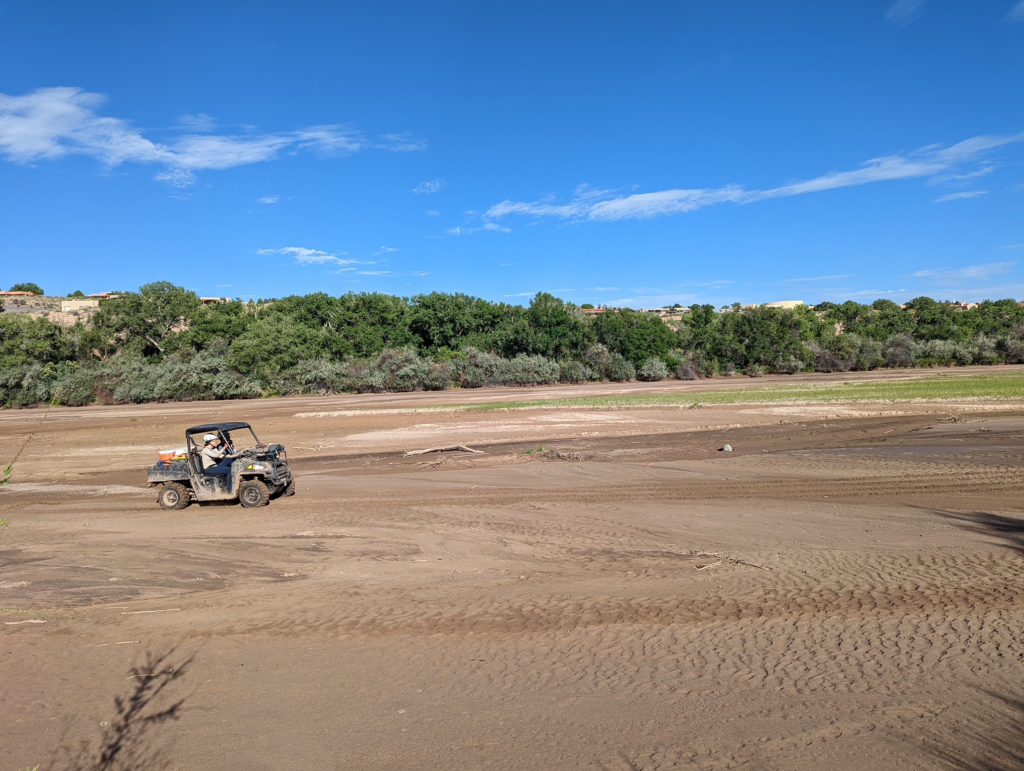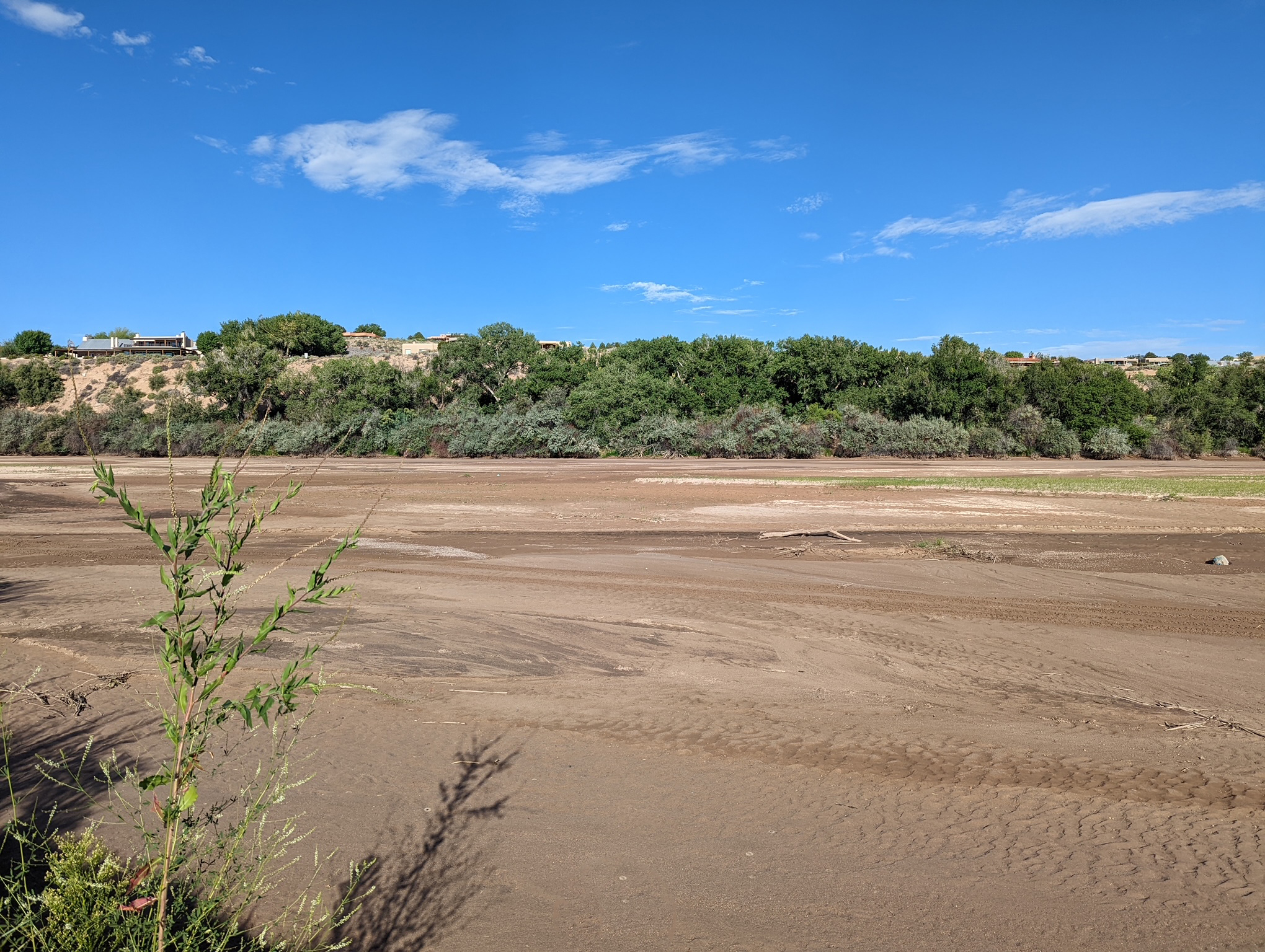BY MERYL KORNFIELD
PHOTOS BY MARY FABRI (ICMGLT ADVISORY COUNCIL MEMBER)
A stretch of the Rio Grande near Albuquerque that supplies farmers with water and a habitat for an array of aquatic life is drying — an unsettling sighting of climate change’s effects in a populous U.S. city.
As the summer’s hotter and drier weather has fueled drought and fire throughout the West, federal and local agencies are salvaging what they can along a 100-mile section of the river: rationing the water for 66,000 acres of agricultural land and rescuing silvery minnows stranded in the remaining puddles of water. If the area doesn’t get consistent rain soon, the drought not matched in four decades could worsen.

They are also warning residents to prepare for the sight of a bed of mud and sand where one of the nation’s longest rivers should flow. While southern stretches of the river regularly dry out, this reach has not experienced a drought like this since 1983, said Jason Casuga, CEO of the Middle Rio Grande Conservancy District.
“Most folks in Albuquerque who have lived here have grown up always seeing the river have water,” he told The Washington Post. “So it would be a real big surprise to wake up and go outside and look at the river and realize, hey there’s no water.”
After three consecutive years of extreme drought conditions, officials had feared a historic dry spell, but heavy rain in late June offered a brief respite. Still, an arid July and triple-digit temperatures scorched any hope. As of Thursday, more than 73 percent of New Mexico is under an “extreme” or “severe” drought, according to the U.S. Drought Monitor.
Casuga said that officials’ fears came true Friday when investigators arrived at the river and reported seeing the stretch of gravel and sand. Where water had pooled, authorities could measure water flow, which was historically weak.
The most popular and interesting stories of the day to keep you in the know. In your inbox, every day.
“We’re pretty much out of water at this point,” Casuga said.
Aside from rain, the other options for water have been sapped, Casuga said. New Mexico is in debt to Texas as part of their water-sharing agreement. A reservoir at El Vado is not accessible this year because of a dam-building project. Other reserves upstream would not be able to help much this year because of weak snowpack and a lack of rain. Nearby Elephant Butte Lake is half full compared with just months ago.
In the meantime, the Bureau of Reclamation has released stored water to target specific areas where silvery minnows live, rehousing fish as well. The river is also home to the willow flycatcher and yellow-billed cuckoo.
The unusual sight of the river, a brown scab through the green swath of cottonwood and willow trees, has shocked those who live along the river.
John Fleck, who is writing a book about the river, investigated after a friend reported imminent drying and described it as “a lovely puddly mess of mud.”
Meryl Kornfield is a staff writer on the general assignment desk of The Washington Post.
Democracy Dies in Darkness
© 1996-2022 The Washington Post




